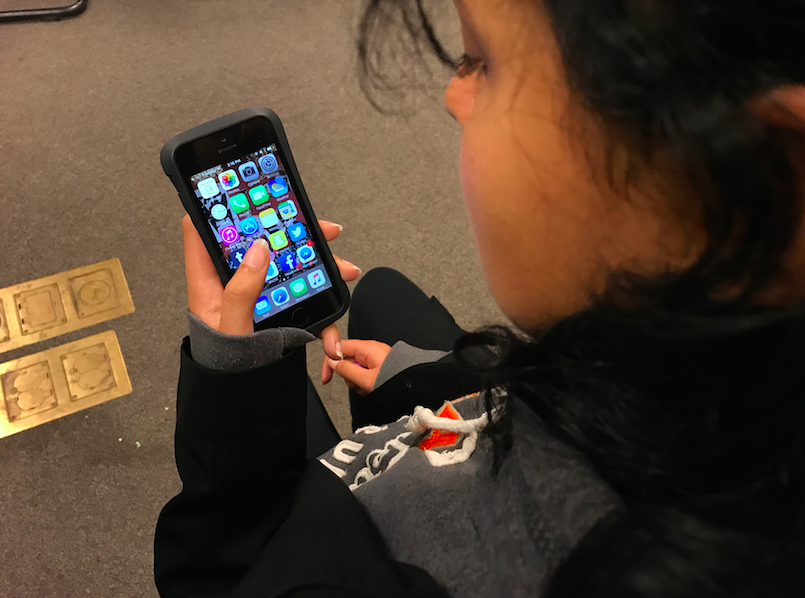Did you get here?
When we see someone who is hurt or struggling, we immediately wonder if they are okay, if they need any help. And while we jump to ask what’s wrong when we see physical illness — a classmate with a cast or someone struggling through the halls on crutches — we joke about mental illnesses all the time.
Are you still reading?
Walking through MVHS, it isn’t uncommon to hear a student say things like, “Yeah, I’m so OCD,” or “I have ADD.” (Survey question about how often people use these phrases) But do we really understand what these terms mean? While we are simply talking about how focused on details we are or how distracted we are, we unintentionally invalidate the seriousness of these diagnosed disorders.
Are you paying attention?
According to the National Institute of Mental Health, ADHD, otherwise known as attention deficit hyperactivity disorder, is a neurological disorder showing symptoms of short attention spans, hyperactivity and spontaneous actions. In some cases, this disorder impairs a person’s ability to communicate with others and hinders the quality at which they can concentrate in work or school environments.
It is true that with the increase of technology, we have become prone to decreased attention spans, a symptom of ADHD. Earlier and earlier exposure to cell phones, for one, leads to decreased attention span and lack of focus. While many students claim to have these “symptoms” in everyday conversation, they don’t all really have ADHD.
Have you gotten this far?
The first iPhone was released 10 years ago, in 2007. Since then, children have had easier access to technology. According to a report by the National Center for Education Statistics in 2011, about 90 percent of children and adolescents use computers. Parents’ reasons differ, but most of them end up buying their children cellphones. In a survey done by Deseret News, 78 percent of teens between ages 12 and 17 a cellphone. And with such a widespread access to technology, it’s no doubt that many benefits have arisen. We can access information, share documents and publish articles, just in a matter of seconds.
Still here?
As students of Silicon Valley, we have experienced this growth in technology firsthand. We too have been exposed to technology from an early age. Apple is headquartered here, as are Google, Facebook and Netflix among many other tech companies. ___ percent of MVHS students have smart phones. And many of us would probably say that these devices have made a large impact on our lives, for the better.
Are you still concentrating?
But with this increased exposure to technology, we are simultaneously providing ourselves with more distractions.
Distracted yet?
With technology right at our fingertips, we have a multitude of ways to entertain ourselves. We can easily switch from scanning our Instagram feed to taking a quick picture on Snapchat to maintain our streaks in a matter of seconds. When we get bored of one thing, we can easily switch to something else. But that’s not how it works in real life. We can’t just skip from activity to activity in a matter of seconds. It’s not that simple. But we have become so accustomed to this habit of switching between our different forms of entertainment that we’re not used to having to concentrate on one thing for a long period of time.
Bored yet?
Imagine a typical day in class. Instead of focusing on the lecture, we find our minds wandering elsewhere. A few minutes in and the teacher’s voice already sounds like a distant drone. The need to take out our phones to save us from this boredom becomes greater and greater. Sound familiar?
How about now?
We’re so used to constantly having something to do that when we don’t, we don’t know what to do with ourselves. Without cell phones to entertain us, we have nothing to do. We’re not used to just sitting there and just thinking or being bored. We need to get better at being bored. We need to learn to be present in the moment.
It’s now part of human instinct to grab for our phones even at the slightest moment of boredom. But what seems to be better for us is to experience it.
Have you read until here?
And while we can all relate to our lessening attention spans, we shouldn’t equate these symptoms to having ADHD. We may joke about having these disorders, but we don’t know how different it is to have to actually deal with these disabilities. And the more we throw around these terms, the more we undermine the seriousness of these mental illnesses. We invalidate symptoms of actual people with ADHD because we dismiss it as just something people say. Maybe if we learned to be bored and live in the moment, we would no longer feel the need to throw these words around so loosely.
Are you still focused?
Once sayings are created, it’s simply impossible to completely stop the spread of them. But we need to be more aware of our words and understanding of those who actually have these disorders. We need to stop describing our habits with a term that is actually a serious condition. Instead of accusing them of having an unfair advantage or ignoring their needs, we should work to understand that mental illnesses are real problems. They’re not something that people make up in their minds, not a phase in their lives. They are serious diseases that need to be treated with the same understanding and care as any other physical disability.










